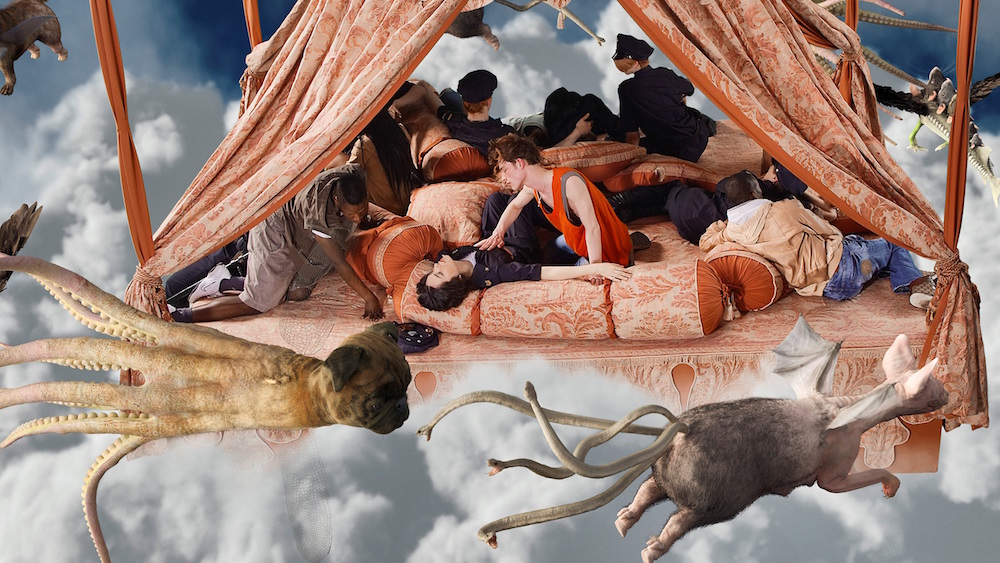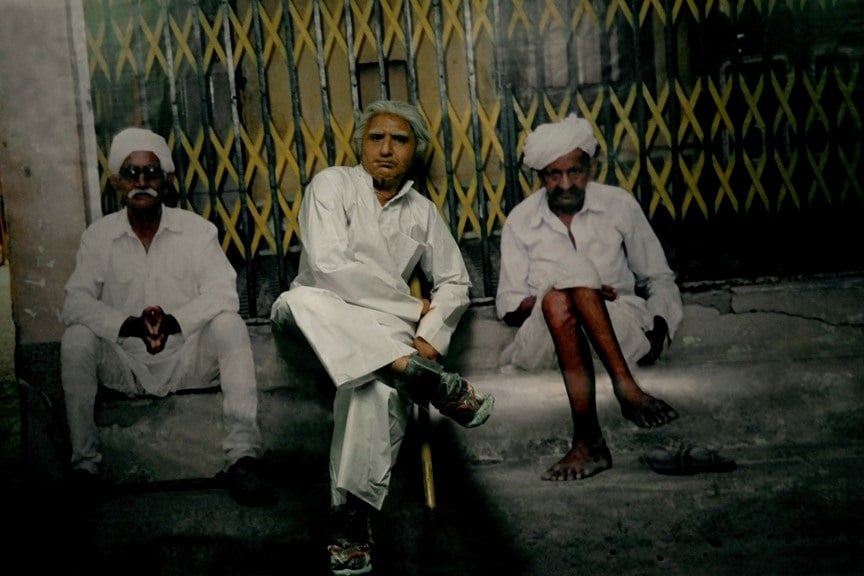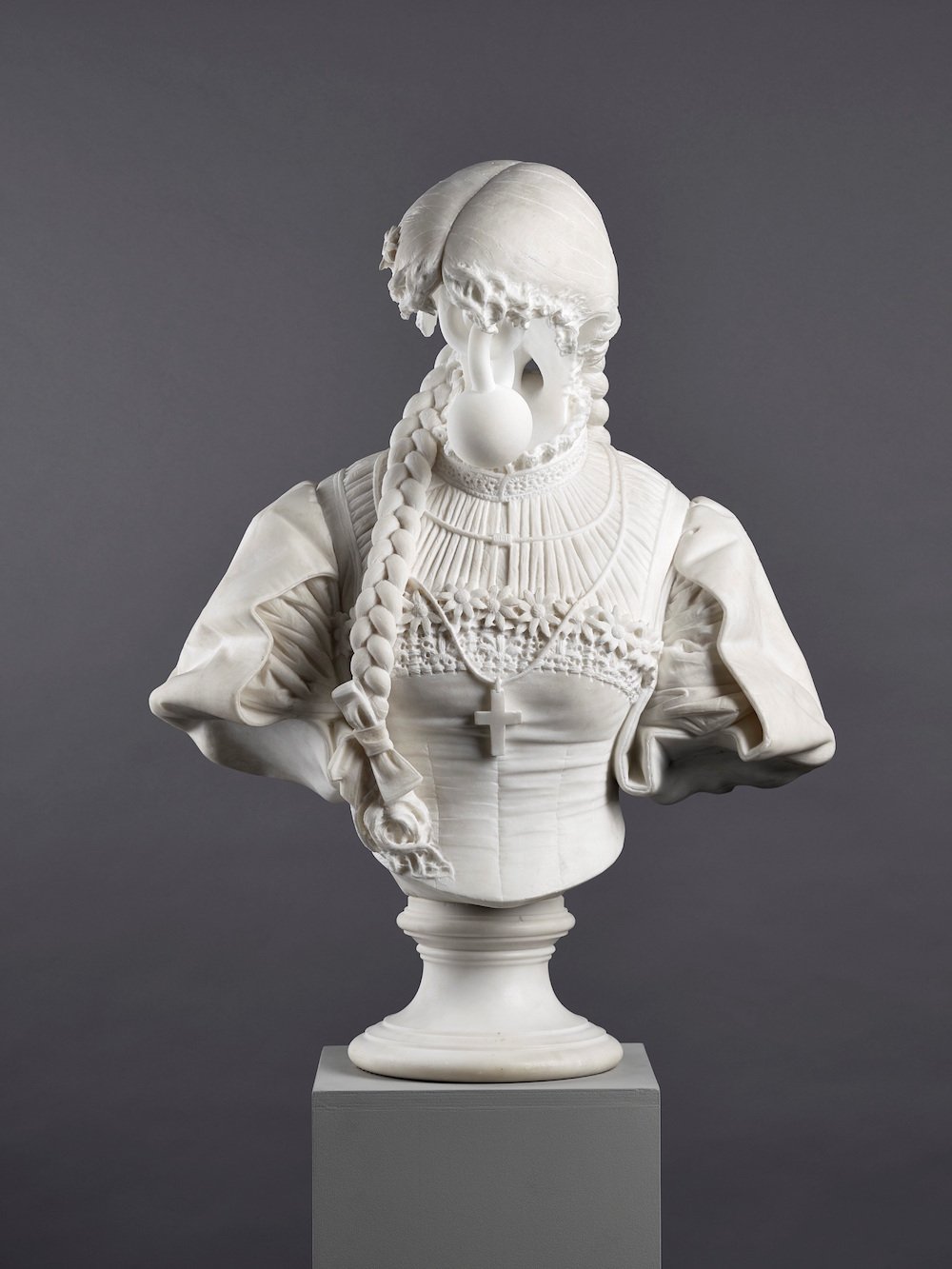Art World
Kochi-Muziris Biennale Announces Bold New Curatorial Vision
It's the largest contemporary art biennial in South Asia.

It's the largest contemporary art biennial in South Asia.

Skye Arundhati Thomas

The third edition of The Kochi-Muziris Biennale, the largest contemporary art biennial in South Asia, has announced its curatorial focus and title, as well as a list of participating artists. Slated to open this December, the biennial will be titled “forming in the pupil of an eye.”
Artist Sudarshan Shetty is the chief curator of this year’s biennale. Best known for his sculptural installations, he has drawn inspiration from India being historically known as the “land of the seven rivers.” The rivers thus form the conceptual framework for the curatorial question, which asks, “what does it mean to be together in time–to be contemporary?”

Manasi Bhatt, from series entitled “A Suite”. Courtesy Kochi Muziris Biennale.
“I see the Biennale as existing in process, something which flows, and I wanted to engage artists whose practices will create works that exist not only for the duration of the Biennale, but into the time beyond,” Shetty said in a statement.
The Biennale also has a strong social consciousness, with ties to its local community, as well as its partner project “The Students Biennale,” which will showcase work by students from some of the most interesting art schools and courses in the country.

Jonathan Owen, Untitled, (2016). Courtesy Kochi Muziris Biennale.
“Kochi Muziris is first and foremost a ‘People’s Biennale’, the idea of community and social engagement is also deeply embedded within the curation,” says Shetty. Set to open on December 12, 2016, it will run for 108 days, closing on March 29, 2017.
A list of participating artists includes:
Abhishek Hazra (India)
Abir Karmakar (India)
Achraf Touloub (Morocco/France)
AES+F (Russia)
Ahmet Öğüt (Turkey/Germany)
Aki Sasamoto (Japan/USA)
Aleksandra Ska (Poland)
Aleš Šteger (Slovenia)
Alicja Kwade (Poland/Germany)
Anamika Haksar (India)
Avinash Veeraraghavan (India)
Bara Bhaskaran (India)
C Bhagyanath (India)
Camille Norment (USA/Norway)
Carl Pruscha and Eva Schlegel (Austria)
Caroline Duchatelet (France)
Charles Avery (United Kingdom)
Chittrovanu Mazumdar (India)
Chris Mann (Australia/USA)
Dana Awartani (Saudi Arabia)
Daniele Galliano (Italy)
Desmond Lazaro (India/United Kingdom)
Dia Mehta Bhupal (India)
Endri Dani (Albania)
Erik van Lieshout (Netherlands)
Éva Magyarósi (Hungary)
Eva Schlegel (Austria)
François Mazabraud (France)
Gabriel Lester (Netherlands)
Gauri Gill (India)
Gary Hill (USA)
Hanna Tuulikki (United Kingdom)
Himmat Shah (India)
Javier Peréz (Spain)
Jonathan Owen (United Kingdom)
Kabir Mohanty (India)
Katarina Zdjelar (Netherlands)
Katrīna Neiburga and Andris Eglītis (Latvia)
Lantian Xie (UAE)
Leighton Pierce (USA)
Lundahl & Seitl (Sweden)
Mansi Bhatt (India)
Martin Walde (Austria)
Mikhail Karikis (United Kingdom/Greece)
Miller Puckette (USA)
Naiza Khan (Pakistan/United Kingdom)
Nicola Durvasula and John Tilbury (United Kingdom)
Orijit Sen (India)
Ouyang Jianghe (China)
Padmini Chettur (India)
Paweł Althamer (Poland)
Pedro Gómez-Egaña (Colombia/Norway)
Prabhavathi Meppayil (India)
Praneet Soi (India/Holland)
Rachel Maclean (United Kingdom)
Ravi Agarwal (India)
Raul Zurita (Chile)
Remen Chopra (India)
Sergio Chejfec (Argentina/USA)
Sharmistha Mohanty (India)
Sirous Namazi (Iran/Sweden)
Sophie Dejode and Bertrand Lacombe (France)
Stan Douglas (Canada)
Subrat Behera (India)
Sunil Padwal (India)
Takayuki Yamamoto (Japan)
Tom Burckhardt (USA)
Tony Joseph (India)
T.V. Santhosh (India)
Valerie Mejer (Mexico)
Voldemārs Johansons (Latvia)
Yael Efrati (Israel)
Yardena Kurulkar (India)
Yuko Mohri (Japan)
Zuleikha Chaudhari (India)